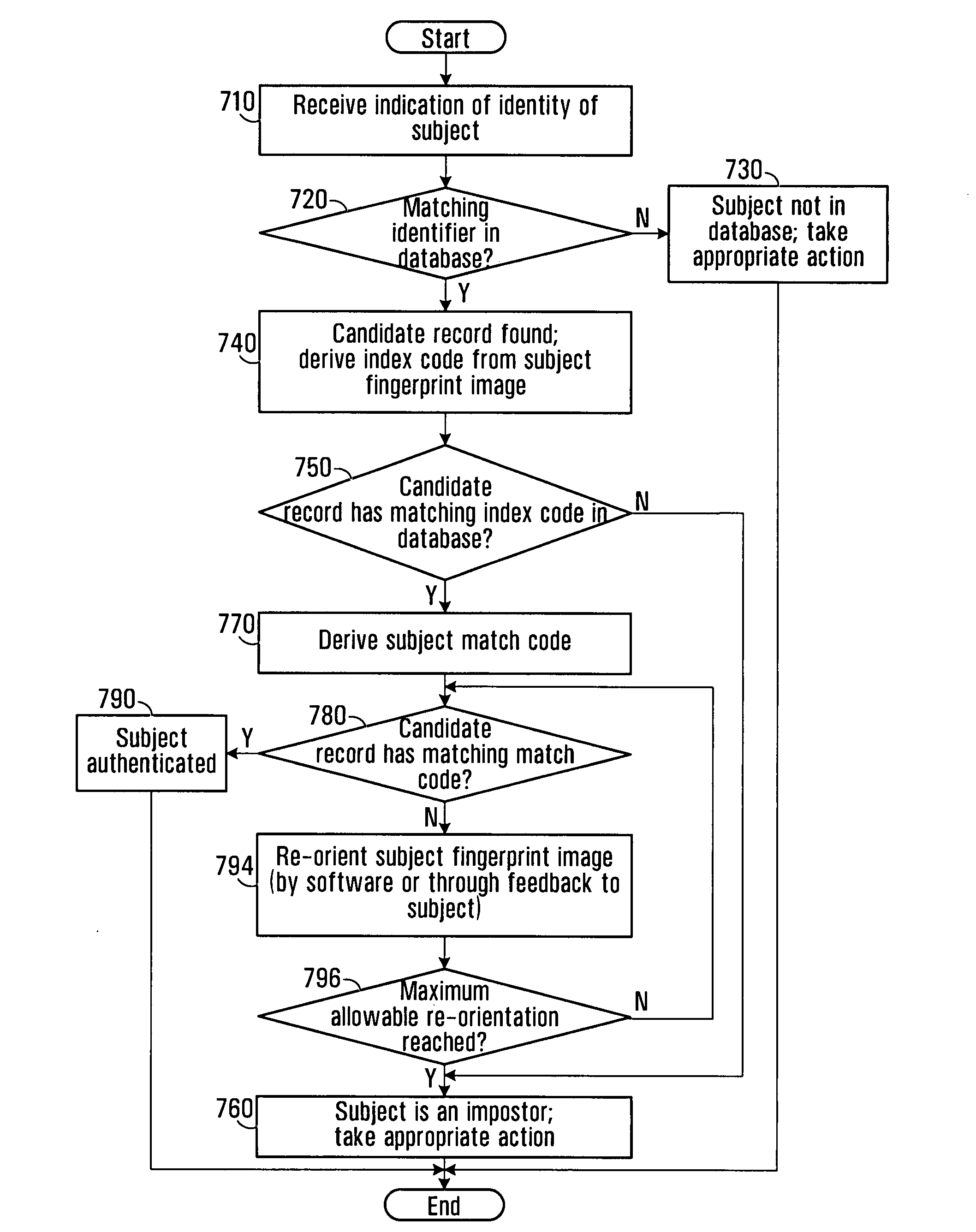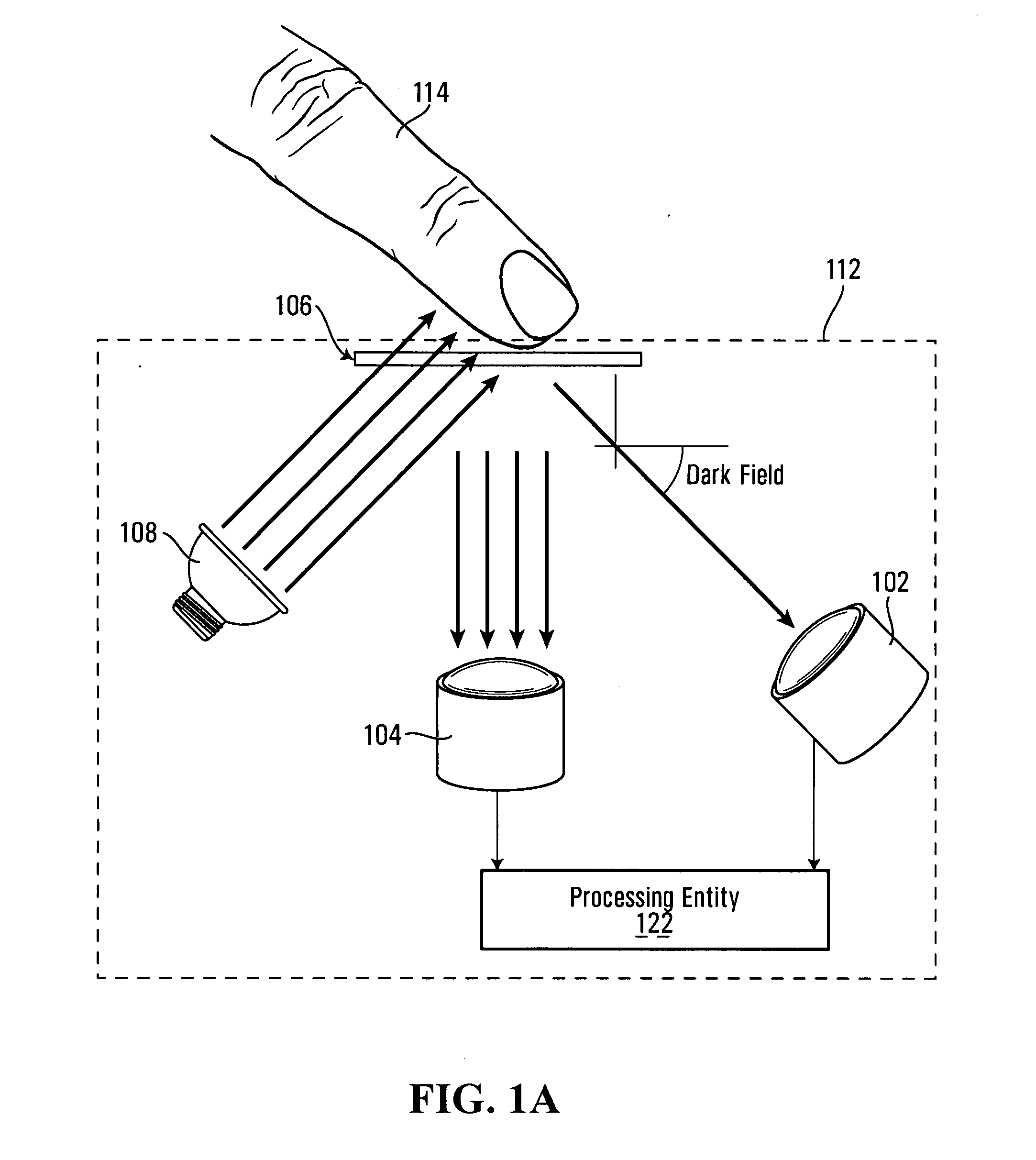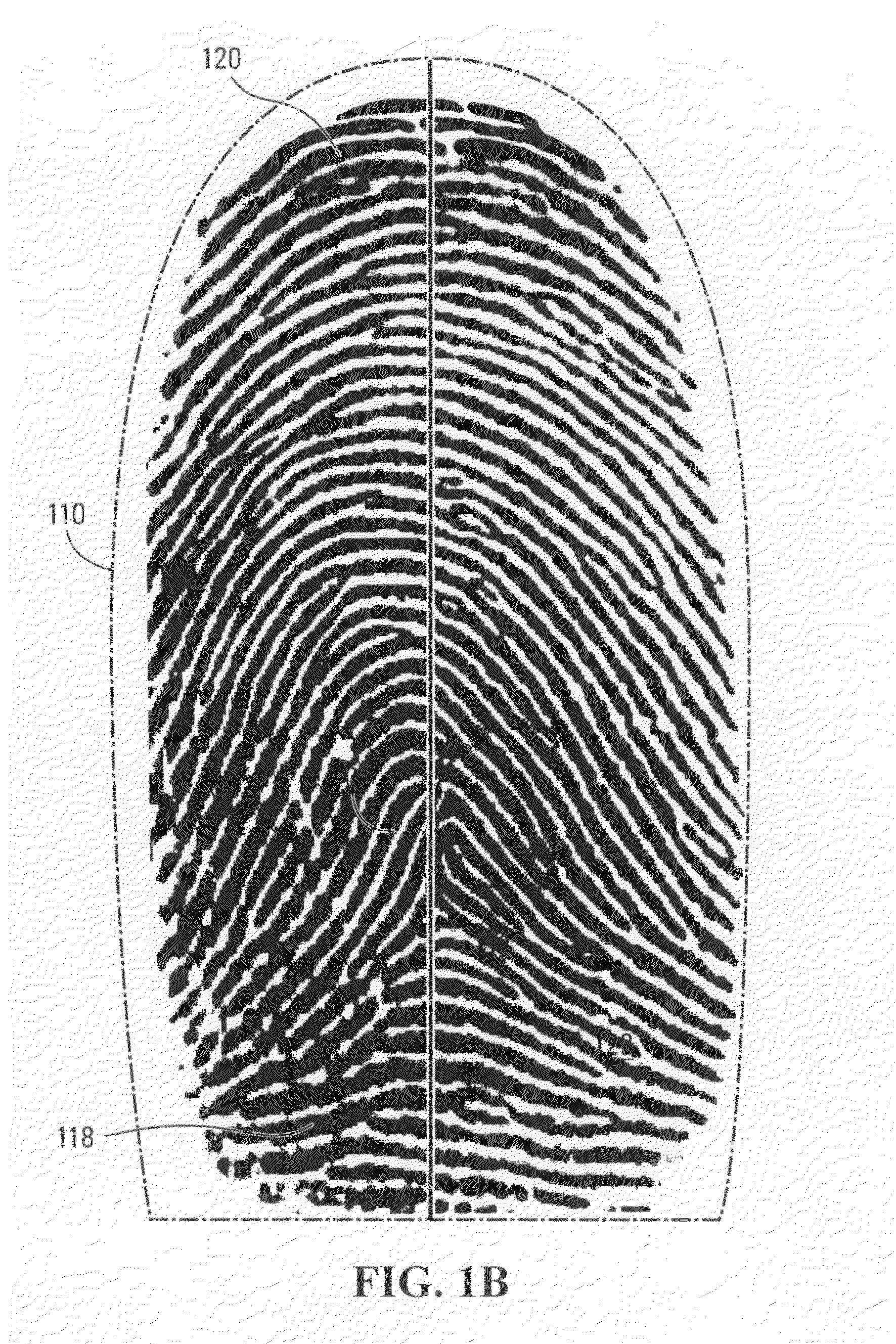Methods and systems for automated fingerprint recognition
a fingerprint recognition and fingerprint technology, applied in the field of fingerprint recognition technology, can solve the problems of inability to reach the correct conclusion, conventional algorithms used by computers, and low matching score achievable by conventional fingerprint recognition techniques in comparison with certain other biometric technologies
- Summary
- Abstract
- Description
- Claims
- Application Information
AI Technical Summary
Benefits of technology
Problems solved by technology
Method used
Image
Examples
Embodiment Construction
[0027]The fingerprint recognition process comprises two main phases, namely an enrollment phase and an active phase. During the enrollment phase, a database of records is populated with fingerprint data regarding a plurality of persons of interest, for eventual comparison with fingerprint data obtained from a subject during the active phase. Enrollment of persons of interest may be done by processing live-scan fingerprint images (obtained in situ) or by processing legacy fingerprint images, such as inked impressions, obtained previously.
[0028]With reference to FIG. 2, there is shown a database 26, which comprises a plurality of records 28. The database 26 may be centralized (as in a fingerprint repository) or distributed (as in a plurality of fingerprint scanners). For instance, where the application at hand involves attempting to determine a subject's presence on an international no-fly list, the database 26 may span the intelligence services of multiple countries. Alternatively, w...
PUM
 Login to View More
Login to View More Abstract
Description
Claims
Application Information
 Login to View More
Login to View More - R&D
- Intellectual Property
- Life Sciences
- Materials
- Tech Scout
- Unparalleled Data Quality
- Higher Quality Content
- 60% Fewer Hallucinations
Browse by: Latest US Patents, China's latest patents, Technical Efficacy Thesaurus, Application Domain, Technology Topic, Popular Technical Reports.
© 2025 PatSnap. All rights reserved.Legal|Privacy policy|Modern Slavery Act Transparency Statement|Sitemap|About US| Contact US: help@patsnap.com



